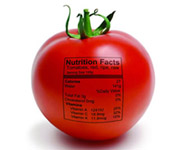Nutrition and Health Sciences, Department of

Department of Nutrition and Health Sciences: Faculty Publications
ORCID IDs
Document Type
Article
Date of this Version
8-2010
Abstract
This study tested the hypothesis that a culturally developed omega-3 (n-3) fatty acid food frequency questionnaire (FFQ) could be an accurate instrument to capture n-3 fatty acid food intakes of first-generation Midwestern Latinas. The goal of the study was to assess validity and test-retest reliability of an FFQ to estimate total n-3 fatty acid (total n-3), α-linolenic acid (ALA), eicosapentaenoic acid (EPA), and docosahexaenoic acid (DHA) intakes. An n-3 FFQ was developed and pilot tested. Two FFQs and 3 nonconsecutive 24-hour recalls were collected from 162 participants. Pearson correlation and paired t test were used to test the hypothesis. Correlation of the 2 FFQs was 0.71 for total n-3, 0.65 for ALA, 0.74 for EPA, and 0.54 for DHA (P < .01). The means of the 2 FFQs and of the 24-hour recalls were not significantly different for total n-3 and ALA (P > .05), but were significantly different for EPA and DHA. The n-3 FFQ had acceptable reliability, validated only total n-3 and ALA, and provided relevant findings about the n-3 eating habits of Midwestern Latinas


Comments
Published in Nutrition Research 30:8 (August 2010), pp. 550–557; doi: 10.1016/j.nutres.2010.07.007 Copyright © 2010 Elsevier Inc. Used by permission. http://wwww.nrjournal.com